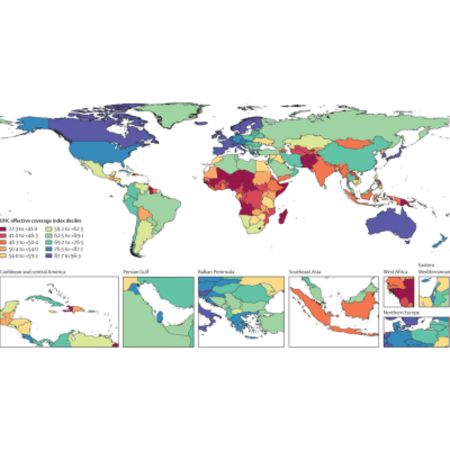Universal health coverage (UHC) means enabling all people to receive necessary healthcare services without experiencing financial burden. A new study (GBD 2019 Universal Health Coverage Collaborators 2020) has assessed progress on UHC effective coverage for 204 countries and territories over the past three decades (1990 to 2019).
You might also like:World Health Day: State of the World’s Nursing Report
Globally there have been advances on the UHC service coverage since 1990, according to the study, although "considerable gaps" between locations with the highest and lowest levels of UHC effective coverage remained in 2019.
In particular, many countries performed poorly in terms of coverage for non-communicable diseases relative to those for communicable diseases and maternal and child health. The low level of coverage was observed even when non-communicable diseases accounted for a greater proportion of potential health gains in 2019.
Many countries showed lagging performance on effective coverage indicators for non-communicable diseases relative to those for communicable diseases and maternal and child health, despite non-communicable diseases accounting for a greater proportion of potential health gains in 2019. This trend suggests that many countries' health systems and financing priorities are not moving as quickly as their epidemiological and demographic transitions, the study points out.
Another important observation is that higher pooled health spending per capita mostly correlated with higher UHC effective coverage. However, the study authors – an international expert group called the ‘GBD 2019 Universal Health Coverage Collaborators’ – still note that many countries are far below performance levels achieved by other countries with similar amounts of health expenditures. This particular finding highlights the importance of increasing both health-system efficiencies and funding for UHC, the authors explain.
A number of frameworks or approaches have been proposed for monitoring UHC service coverage, including those from the World Health Organization (i.e. the UHC service coverage index, the official UN measure for the Sustainable Development Goal indicator 3.8.1) and the World Bank. Also, currently available UHC service coverage metrics are heavily focussed on infectious diseases as well as reproductive, neonatal, maternal and child health.
Using data from the Global Burden of Diseases, Injuries, and Risk Factors Study (GBD) 2019, the GBD 2019 Universal Health Coverage Collaborators developed a new approach: measuring country-level effective coverage and thus better representing how well health systems are delivering health gains relative to their populations' health needs.
The new framework mapped 23 effective coverage indicators against five health service domains (promotion, prevention, treatment, rehabilitation and palliation) and five population-age groups (i.e. reproductive and newborn, children <5 years, children and adolescents aged 5-19 years, adults aged 20-64 years, and adults aged ≥65 years).
These indicators were based on intervention coverage or outcome-based measures, such as mortality-to-incidence ratios to approximate access to quality care; outcome-based measures were transformed to values on a scale of 0–100 based on the 2.5th and 97.5th percentile of location-year values.
Under this new measurement framework, countries would need to reach $1,398 pooled spending per capita – and do so under maximum efficiency – in order to achieve at least 80 on the UHC effective coverage index.
Despite the recognition that advances towards UHC also require service provision for non-communicable diseases and delivering interventions to a broader range of population-age groups, poor performance on various non-communicable diseases has severely hindered progress on UHC effective coverage in many countries. This trend, the authors say, will likely worsen until quality health services for non-communicable diseases are prioritised by countries and development partners alike.
"If current trends hold, the world will fall short of delivering on its UHC ambitions for the GPW13 and SDGs. Although this outcome is not yet inevitable, the window for meaningful action and health-system changes is rapidly narrowing," the authors note. "By focusing on UHC effective coverage and populations' health needs across the lifespan, we strengthen the evidence base for bringing UHC closer to reality for all."
Source: The Lancet
Image credit: GBD 2019 Universal Health Coverage Collaborators 2020



























